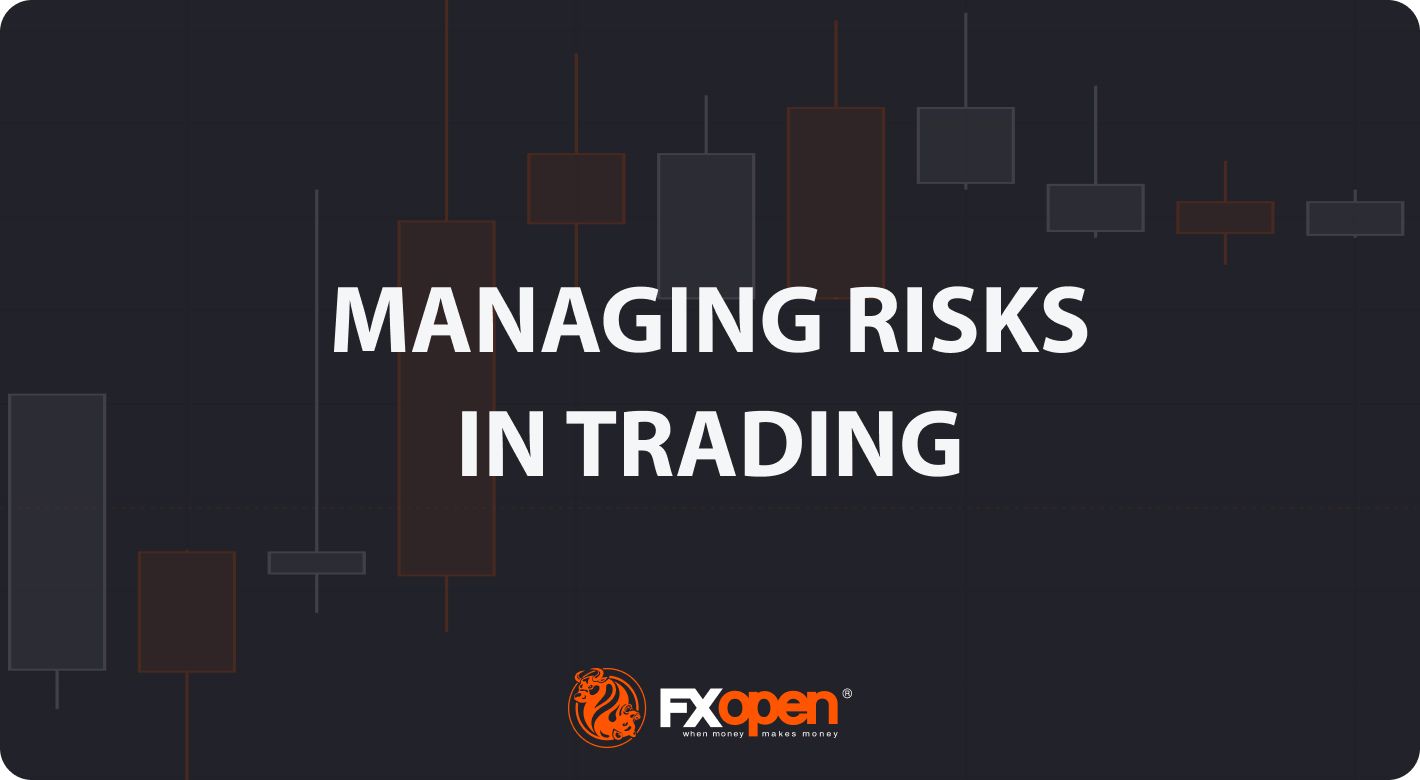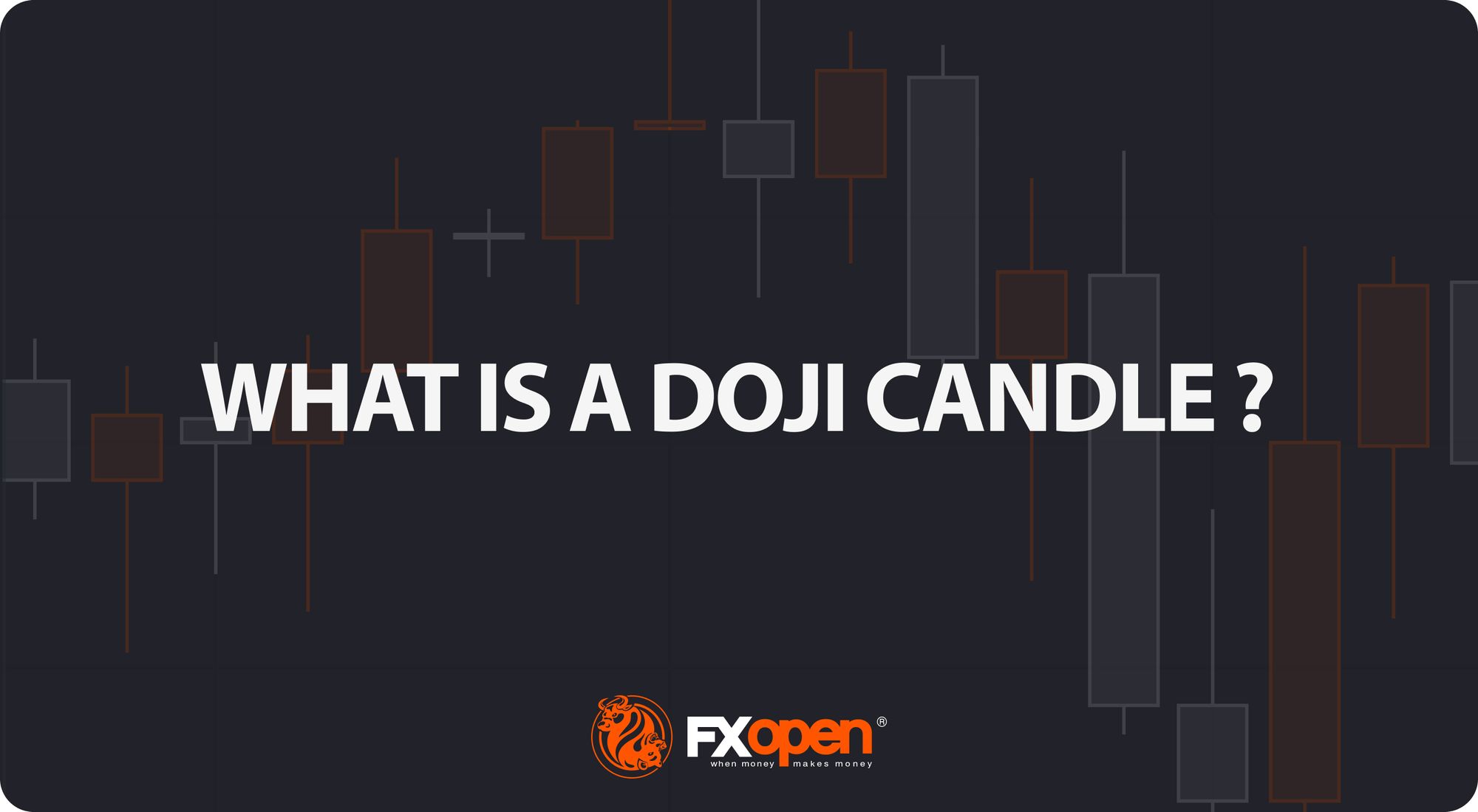FXOpen

Risk management and tolerance are essential in today’s financial market. They involve identifying potential risks and threats and implementing strategies to minimise their impact on trading outcomes. Risk management involves position sizing, setting stop-loss orders, diversification, and implementing risk-reward ratios. In this FXOpen article, we will cover all of them.
Understanding Risk in Active Trading
Risk is an inherent part of active trading, and traders need to understand the various dimensions of it. Risk refers to the potential for financial loss or adverse outcomes associated with the buying and selling of financial assets, such as stocks, bonds, commodities, and currencies. Trading inherently involves uncertainty, and understanding and managing these risks is essential for traders to make informed decisions and protect their capital.
Differentiating Between Systematic and Unsystematic Risk
Systematic risk, also known as market risk, is associated with factors that affect the overall market, such as economic conditions, interest rates, political events, and natural disasters. It can’t be avoided through diversification. Unsystematic risk, on the other hand, refers to hazards specific to individual stocks or sectors and can be reduced through diversification. Examples include company-specific risks, management risks, and regulatory risks.
It’s worth noting that diversification is one of the risk management strategies that spread investments across different assets, markets, or sectors to mitigate exposure to any single investment. It aims to reduce the impact of potential losses by allocating resources to various instruments, thus reducing the overall risk in a portfolio. Diversification is essential for traders and investors to minimise the impact of market volatility and protect their capital. FXOpen lets you have access to diverse portfolios via its TickTrader platform.
Risk Factors Specific to Active Trading
Active trading involves frequent buying and selling. Here are the most common reasons for risk:
- Market Volatility
Active traders often rely on short-term price movements. However, increased market volatility can result in unexpected price swings and potential losses.
- Lack of Diversification
Active traders may concentrate their capital on a limited number of assets or markets, increasing their exposure to the performance of those specific assets. This lack of diversification can amplify losses if those assets perform poorly.
- Regulatory Instability
Traders must adhere to relevant financial regulations and rules. Changes in regulations or non-compliance can result in penalties or account restrictions.
- Margin Difficulties
Many active traders use margin or leverage to increase their trading positions. However, leverage leads to increased losses. Traders can be forced to sell positions at a loss to meet margin calls if trades go against them.
How to Manage Risk in Trading Through Risk Tolerance
By setting risk tolerance, traders can make informed decisions and create a trading plan that fits their preferences and objectives. Here are some basic steps:
- Assessing Your Risk Tolerance
Assessing risk tolerance requires an honest evaluation of one's financial and emotional capacity to handle potential losses. It involves understanding personal preferences, financial goals, investment time horizons, and willingness to withstand market fluctuations.
- Establishing Risk Tolerance Boundaries
Once risk tolerance has been assessed, it is essential to establish boundaries that define an acceptable level of risk exposure. This involves determining the maximum percentage of capital that can be risked on a single trade or within a specific period.
- Aligning Risk Tolerance with Trading Goals
To achieve long-term success, traders must align their risk tolerance with their trading goals. This entails understanding the relationship between risk and potential rewards and finding a balance that supports their objectives.
Position Sizing Strategies
Several position-sizing strategies are available for traders to implement. These risk management systems in trading vary in complexity and can be customised to suit individual trading preferences. Here are some common types of position-sizing strategies:
- Fixed Dollar Amount Position Sizing
With this strategy, traders determine the maximum dollar amount they are willing to risk on each trade. The position size is then calculated based on the difference between the entry price and the stop loss level.
- Percentage of Portfolio Position Sizing
This strategy involves determining a fixed percentage of the trading account balance that will be risked on each trade. For example, if a trader decides to risk 2% of their account balance per trade, they will adjust their position size accordingly.
- Risk-Adjusted Position Sizing (RAPS)
It is a strategy traders use to determine the optimal size of their positions based on the level of risk they are willing to take. It considers the trader's risk tolerance and the potential losses associated with a particular trade. RAPS's primary objective is maximising profits while minimising the risk of significant losses.
- Volatility-Based Position Sizing
This strategy adjusts the position size based on the volatility of the asset being traded. Higher volatility may require smaller position sizes, whereas lower volatility may allow more significant positions. Traders can use indicators like Average True Range (ATR) to calculate volatility and adjust their position sizes accordingly.
Stop-Loss Orders
Stop-loss orders are a vital risk management tool in trading. They:
1. Help traders limit potential losses by automatically triggering an exit from a trade when the price reaches a certain level.
2. Provide a clear exit strategy.
3. Preserve a trader’s trading capital over the long term.
4. Help traders determine their position size more precisely. This means they can adjust their trade size to align with your predetermined risk tolerance.
Types of Stop-Loss Orders
There are fixed and trailing stop-loss orders.
Fixed Stop Losses
With this stop-loss order type, traders specify a price at which they want to exit the trade. Once the market price reaches or breaches this predetermined price level, the trade is closed automatically at or near the specified limit price.
Trailing Stop Losses
A trailing stop-loss order is a dynamic order type that automatically adjusts the stop-loss level as the market price moves in the trader's favour.
Setting Effective Stop-Loss Levels
Setting adequate stop-loss levels is crucial for managing risk and protecting capital. Here are some principles and guidelines traders follow when determining stop-loss levels:
- Support and Resistance Levels
They identify essential support and resistance levels on the chart. These levels represent areas prices have historically had difficulty moving beyond. Placing a stop loss just below support or above resistance can help protect against potential market reversals.
- Technical Analysis
Traders utilise technical indicators and chart patterns to assist in setting stop losses. For example, if you're trading a trend-following strategy, a common practice is placing the stop loss below the recent swing low in an uptrend or above the swing high in a downtrend.
Risk-Reward Ratio
One important aspect of risk management when day trading is the risk-reward ratio. The risk-reward ratio is a fundamental concept in trading that compares the potential profit of a trade to the amount of risk taken. It helps traders assess whether a trade is worth pursuing based on the possible return relative to the potential loss.
To calculate the risk-reward ratio, divide the potential profit by the possible loss. For example, suppose the potential profit from a trade is $200, and the possible loss is $100. In that case, the risk-reward ratio is 2:1. A higher risk-reward ratio indicates that the potential profit exceeds the potential loss. A lower ratio implies the possible loss is more significant than the potential profit.
Conclusion
To start implementing effective risk management strategies and take control of your trading journey, take the first step and open an FXOpen account. Doing so will give you access to advanced trading tools, comprehensive educational resources, and a platform that prioritises risk management. In trading, stock risk management rules can be applied to forex, commodity, and cryptocurrency* markets. Therefore, all the rules above can be easily applied to any of the over 600 assets available at FXOpen.
*At FXOpen UK and FXOpen AU, Cryptocurrency CFDs are only available for trading by those clients categorised as Professional clients under FCA Rules and Professional clients under ASIC Rules, respectively. They are not available for trading by Retail clients.
This article represents the opinion of the Companies operating under the FXOpen brand only. It is not to be construed as an offer, solicitation, or recommendation with respect to products and services provided by the Companies operating under the FXOpen brand, nor is it to be considered financial advice.
Stay ahead of the market!
Subscribe now to our mailing list and receive the latest market news and insights delivered directly to your inbox.








